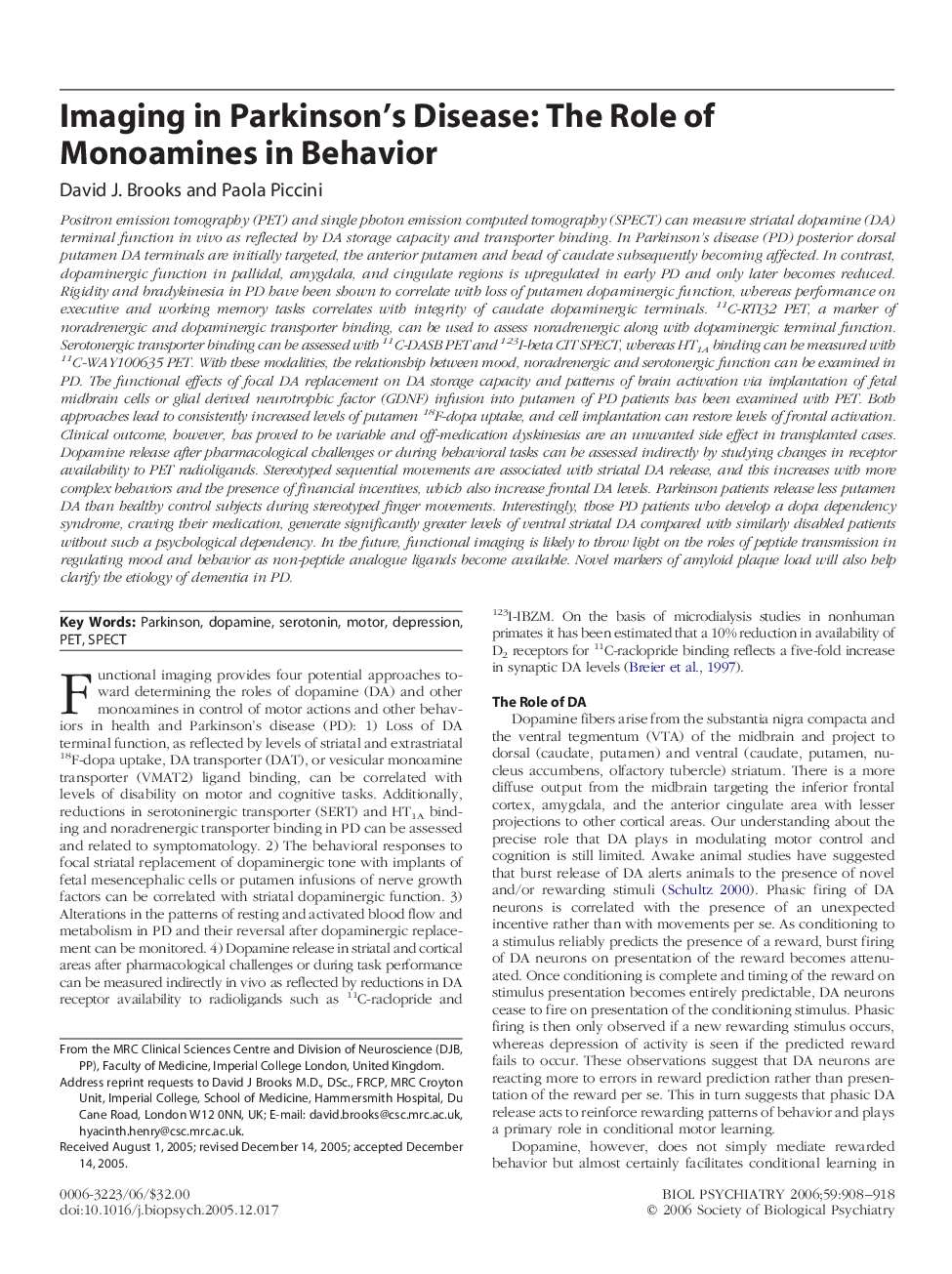| کد مقاله | کد نشریه | سال انتشار | مقاله انگلیسی | نسخه تمام متن |
|---|---|---|---|---|
| 4180343 | 1276599 | 2006 | 11 صفحه PDF | دانلود رایگان |

Positron emission tomography (PET) and single photon emission computed tomography (SPECT) can measure striatal dopamine (DA) terminal function in vivo as reflected by DA storage capacity and transporter binding. In Parkinson’s disease (PD) posterior dorsal putamen DA terminals are initially targeted, the anterior putamen and head of caudate subsequently becoming affected. In contrast, dopaminergic function in pallidal, amygdala, and cingulate regions is upregulated in early PD and only later becomes reduced. Rigidity and bradykinesia in PD have been shown to correlate with loss of putamen dopaminergic function, whereas performance on executive and working memory tasks correlates with integrity of caudate dopaminergic terminals. 11C-RTI32 PET, a marker of noradrenergic and dopaminergic transporter binding, can be used to assess noradrenergic along with dopaminergic terminal function. Serotonergic transporter binding can be assessed with 11C-DASB PET and 123I-beta CIT SPECT, whereas HT1A binding can be measured with 11C-WAY100635 PET. With these modalities, the relationship between mood, noradrenergic and serotonergic function can be examined in PD. The functional effects of focal DA replacement on DA storage capacity and patterns of brain activation via implantation of fetal midbrain cells or glial derived neurotrophic factor (GDNF) infusion into putamen of PD patients has been examined with PET. Both approaches lead to consistently increased levels of putamen 18F-dopa uptake, and cell implantation can restore levels of frontal activation. Clinical outcome, however, has proved to be variable and off-medication dyskinesias are an unwanted side effect in transplanted cases. Dopamine release after pharmacological challenges or during behavioral tasks can be assessed indirectly by studying changes in receptor availability to PET radioligands. Stereotyped sequential movements are associated with striatal DA release, and this increases with more complex behaviors and the presence of financial incentives, which also increase frontal DA levels. Parkinson patients release less putamen DA than healthy control subjects during stereotyped finger movements. Interestingly, those PD patients who develop a dopa dependency syndrome, craving their medication, generate significantly greater levels of ventral striatal DA compared with similarly disabled patients without such a psychological dependency. In the future, functional imaging is likely to throw light on the roles of peptide transmission in regulating mood and behavior as non-peptide analogue ligands become available. Novel markers of amyloid plaque load will also help clarify the etiology of dementia in PD.
Journal: Biological Psychiatry - Volume 59, Issue 10, 15 May 2006, Pages 908–918